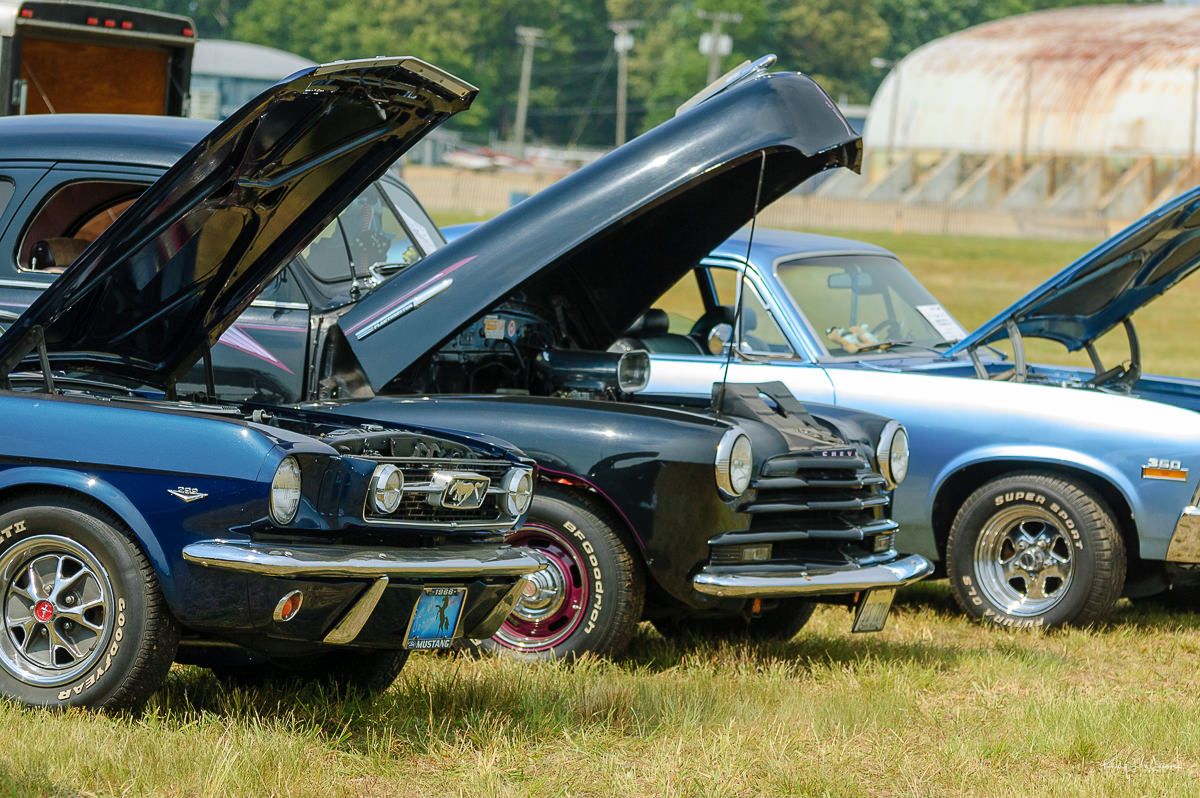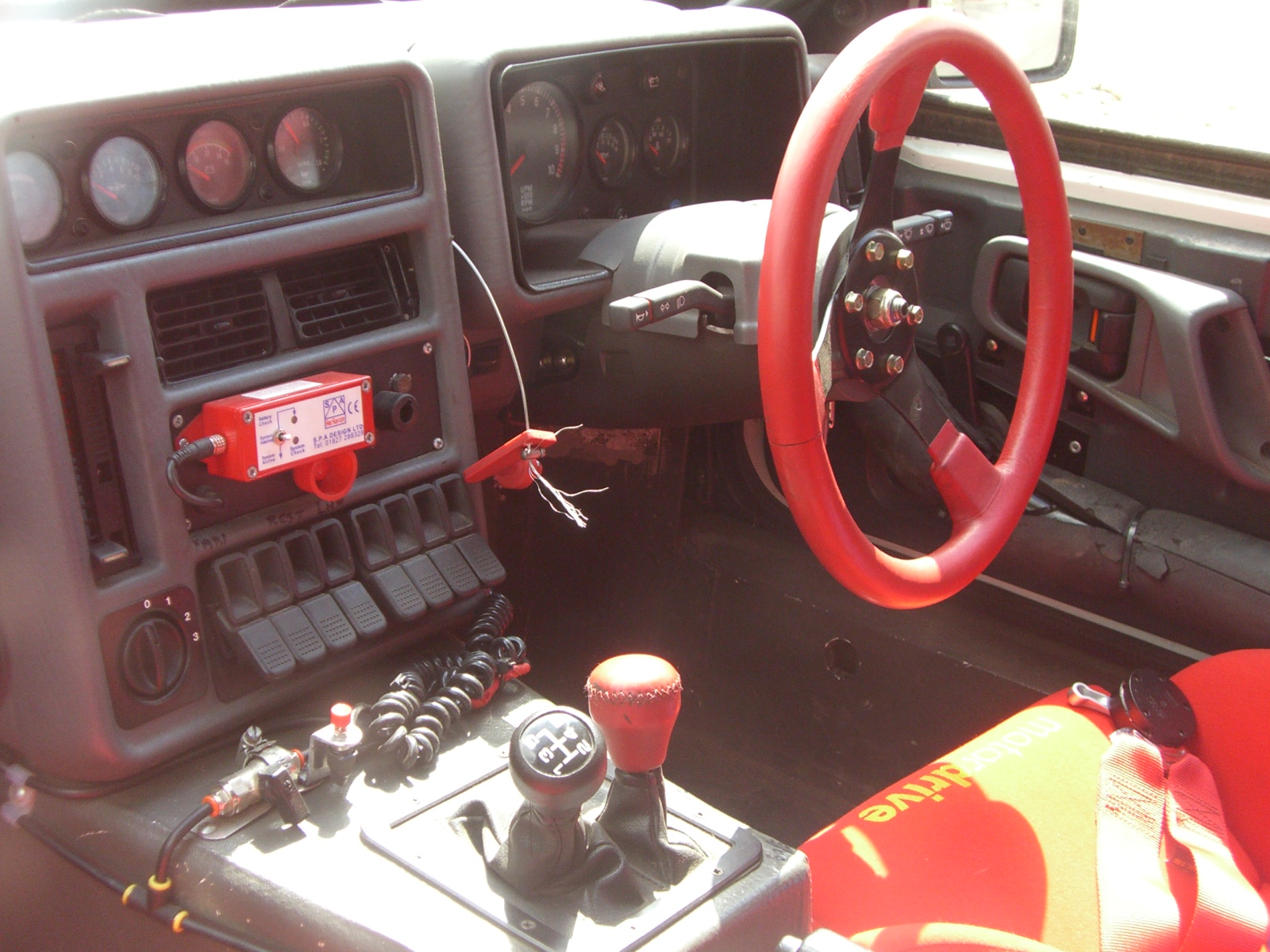
Once upon a time, before every vehicle had to seat a bowling team or seventeen cupholders just to sell, driving was a little more focused and a lot more fun. You didn’t need a third row or a surround-view camera system. You just needed two seats, a stick shift, and an exhaust note that made your heart beat a little faster.
These weren’t the most practical cars, and they didn’t try to be. They were weird, stylish, and full of personality. Built during a time when automakers weren’t afraid to get a little funky, they made every Sunday drive feel like an event. For most people, a sports car is any vehicle with enough horsepower to get their hearts racing. It probably has upgraded suspension and brakes, and possibly a more aggressive design. However, today’s ‘sports cars’ aren’t quite like that; they’re often colossally big, heavy as trucks, and perhaps overpowered for public roads.
In the past, sports cars were light on their feet and all about the driving experience. They only had two seats, too — why would you need more in a car made for joy? Does a go kart need to be practical? Yet despite all these qualities, many past two-seater sports cars have been forgotten today. So, why don’t we right this wrong with a look at some of these disregarded two-seater sports cars that absolutely deserve more attention. We’ve gathered a host of these often-forgotten two-seaters — cars that may have slipped through the cracks but still make you smile when you see one on the road.

1. **Matra Djet (1962-1967)**Renowned for balanced and agile handling and simply adored by Italian supercar manufacturers, the mid-engine configuration has slowly taken over the sports car world. Even the latest Corvette is a mid-engine sports car. But do you know who did it first? It’s not the Lamborghini Miura. Nor the Ferrari Dino 206 GT. Or the ATS 2500 GT, Italy’s first mid-engine machine. It was the Matra Djet, a cheerful French creation.
And the layout wasn’t the car’s only differentiating feature. Imagined by René Bonnet as a Le Mans racecar, the original Djet had a spaceframe chassis and fiberglass body shell. The road car later produced by Matra was a bit tamer, but its tubular steel chassis and plastic body were still very advanced for their time. The same was true for the front and rear independent suspension and four disc brakes.
As for power, the engines weren’t particularly exciting, at least viewed from North American eyes. Initially, the Matra Djet was offered with a Renault 1.1-liter engine that produced 70 hp, or 85 hp in the Gordini-tuned version. Later, the Djet received a more powerful 94-hp engine, and got longer and wider. These tiny powertrains were more than potent enough for the 1,345-pound curb weight.
Especially since the Matra Djet had a drag coefficient of 0.27 Cd. Even underpowered, the original 70-hp Djet could reach 110 mph, and it was a joy to drive in the corners. Responsive. Agile. Balanced — just like a mid-engine sports car should be. It truly set a benchmark for future mid-engine machines.

2. **ATS 2500 GT/GTS (1963-1965)**The French might’ve beaten the Italians to the punch, but there is no arguing who made the better pioneering mid-engine car. Automobili Turismo e Sport (ATS), a company established by Ferrari engineers fired by Enzo Ferrari in 1961, launched Italy’s first mid-engine machine just six months after René Bonnet launched the Djet. However, unlike its French counterpart, the 2500 GT was a more exotic machine – a Ferrari competitor, if you will.
Designed by legendary engineers Carlo Chiti and Giotto Bizzarini, the 2500 GT sports a curvaceous, yet elegant body. Even today, it catches the eye with its pure visual drama. There was more to this car’s story, though. ATS wanted none of that four-cylinder nonsense and instead equipped its sports car with a 2.5-liter V8 that produced 210 hp.
Tasked with moving only 1,798 pounds, it easily propelled the car to 150 mph. However, ATS also offered the 2500 GTS model at launch, which had an aluminum body that dropped the weight to 1,654 pounds, and lifted the top speed to 160 mph. A 0-60 sprint in 5 seconds in the 1960s? These figures were bonkers!
Beyond raw speed, the 2500 GT was also equipped to dance around corners. ATS had already competed in F1 for a couple of years, and equipped its first car with independent suspension on both axles, disc brakes on all wheels, and a five-speed manual. Unfortunately, the 2500 GT didn’t set the world on fire, with only eight examples ever made, but ATS still makes supercars today, a testament to its enduring vision.
Car Model Information: 2023 Hyundai PALISADE Calligraphy
Name: ATS 2500 GT
Manufacturer: Automobili Turismo e Sport
Production: 1963–1965,12 produced
Class: Sports car
Layout: Rear mid-engine, rear-wheel-drive layout
BodyStyle: coupe
Engine: 2.5 L (2468 cc/150.6 cu in) 90° V8
Transmission: manual transmission
Wheelbase: 2502 mm
Abbr: on
Length: 4331 mm
Width: 1613 mm
Height: 1181 mm
Successor: ATS GT
Designer: Franco Scaglione
Categories: ATS vehicles, Articles with short description, CS1: long volume value, Cars introduced in 1963, Cars of Italy
Summary: The ATS 2500 GT is a sports car made by Italian company Automobili Turismo e Sport in Bologna. It was the first Italian and one of the first GT or sports car in the world to have a mid-engine layout. The group behind the ATS project consisted mainly of Ferrari defectors: family troubles had created an uncomfortable working atmosphere for the personnel. ATS, intent on beating Ferrari on all fronts, also produced a Formula One car for 1963, “a ghastly mess, one of the most inept racing cars ever, and its appalling performances did not help the road car.” Even noted driver Phil Hill was unable to provide ATS with any results on track.
Get more information about: ATS 2500 GT
Buying a high-performing used car >>>
Brand: ATS Model: 2500 GT/GTS
Price: $32,135 Mileage: 69,109 mi.
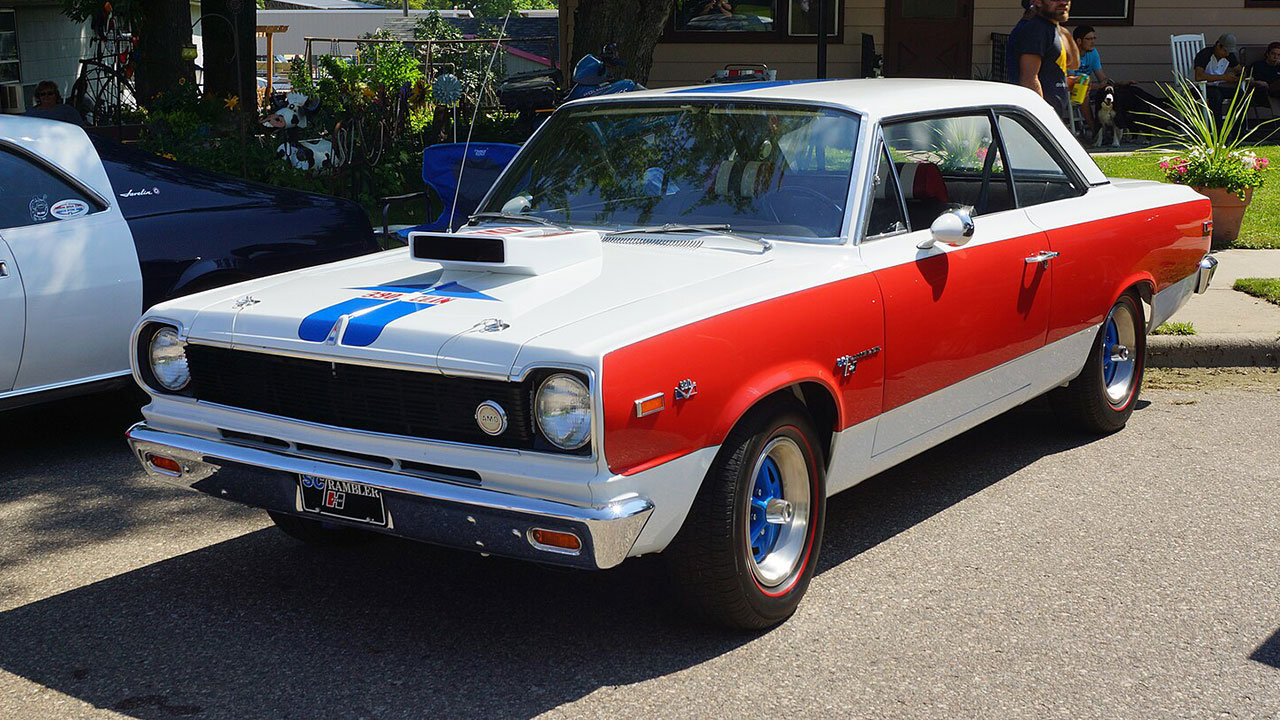
3. **AMC AMX (1968-1970)**The U.S. sports car scene has always been dominated by huge muscle cars with seating for four people. Sure, there is the Corvette and a few other two-seaters, but the muscle car is what best represents America’s automotive history. However, a unique two-seater muscle car launched by the end of the 1960s. Of course, it came from American Motors Corporation (AMC), a company that was never afraid to innovate and break the norms.
The AMX was a two-seater muscle car design, based on the larger Javelin. However, it was literally squished by 12 inches, which is evident when looking by its side profile. While those proportions might seem a little unusual to modern eyes, the AMX had a character all its own, a bold statement in a sea of conventional muscle.
Weird proportions aside, the AMX drove like most of its competitors at the time. Although small, it wasn’t particularly light at 3,340 pounds, so it handled like most muscle cars of the era. Still, AMC equipped the car with its large 6.4-liter V8, which produced 315 hp and beefy 425 lb-ft of torque, paired to a four-speed manual. As a result, it sprinted to 60 in a brisk 6.5 seconds and covered the quarter mile in 15.2 seconds, with a top speed of 125 mph.
Other engine options were also available, including 4.8-liter and 5.6-liter variants, but most buyers opted for the most powerful one. Unfortunately, sales were very low, with AMC building about 7,400 examples. Although enticing, the AMX was perhaps too limited for the American buyer, and as such, the AMC AMX remains as the unsung hero of muscle cars, a quirky two-seater that deserves a second look.

4. **Jowett Jupiter (1950-1954)**You’ve probably never heard about Jowett, but the British automaker made some of the best cars in the post-war era. One of its best creations was the Jupiter, a lightweight two-seat roadster quite typical for a British sports car. Its design wasn’t ordinary, though; it stood out from the crowd with an elegance that belied its post-war origins.
Penned by Reg Korner, the Jupiter looked organic and elegant, with lines that seamlessly flowed into each other. It looked more graceful than other sports cars of its era, and it was more luxurious as well. Notably, the Jupiter had roll-up side windows and door handles, which were often absent from other sports cars of the period, adding a touch of civility to its sporting nature. Still, owners could remove the windshield for racing, a usual trait of early two-seater sports cars.
Under the swoopy front bonnet, the Jupiter was equipped with a 1.5-liter flat-four producing 60.5 hp and 84 lb-ft of torque. Not massive power by any stretch, but certainly enough for a 2,121-pound car launched in 1950. Consequently, Jowett’s sports car took 15.3 seconds to reach 60 mph, and had a top speed of 93 mph. Jowett launched an even lighter R4 version in 1953, which reached 100 mph, but produced only three units before ceasing operations.
The Jupiter was also genuinely good to drive. Up front, it had an independent front suspension with unequal-length wishbones and rack-and-pinion steering, which were advanced for the time. At the rear, a live-axle was supported by four-link trailing arms with Panhard rod. As a testament to its handling balance, the Jupiter famously won the 1,500cc category at the arduous 24 Hours of Le Mans in 1950, 1951, and 1952, cementing its legacy as a true racer.

5. **Panhard CD (1963-1965)**Here is another two-seater sports car that traces its roots to the legendary 24 Hours of Le Mans. Unlike the Jupiter, the Panhard CD didn’t win the overall race, but it left a lasting legacy in the automotive industry as a whole. It’s all thanks to its slippery shape; the Panhard LM64 racecar was designed to slice through the air as efficiently as possible to boost performance and efficiency.
With a drag coefficient of only 0.13 Cd, the LM64 reached almost 140 mph on the Mulsanne straight, despite being powered by a small supercharged 848cc flat-twin engine that made only 78 hp. The road car, named after the abbreviation for coefficient of drag (Cd), wasn’t quite as slippery. Still, with a coefficient of 0.22 Cd, it was more aerodynamically efficient than any other car in the 1960s. Heck, it’s similar to the latest Tesla Model 3’s 0.219 Cd. It’s way lighter than modern EVs, though.
Thanks to its fiberglass body, the Panhard CD had a curb weight of only 1,279 pounds. This incredible lightness was crucial, as its air-cooled 851cc flat-twin engine made only 49 hp in base form, and 59 hp in rally form. A modest output, to be sure, but perfectly adequate for a car designed for efficiency and nimble handling.
The more powerful model reached 99 mph and accelerated to 60 mph in less than 13 seconds — solid figures for a tiny two-cylinder engine. It even returned an impressive 36 mpg! However, despite handling corners admirably, the Panhard CD was a front-wheel-drive car, a characteristic that makes it even more unique among its forgotten two-seater peers.
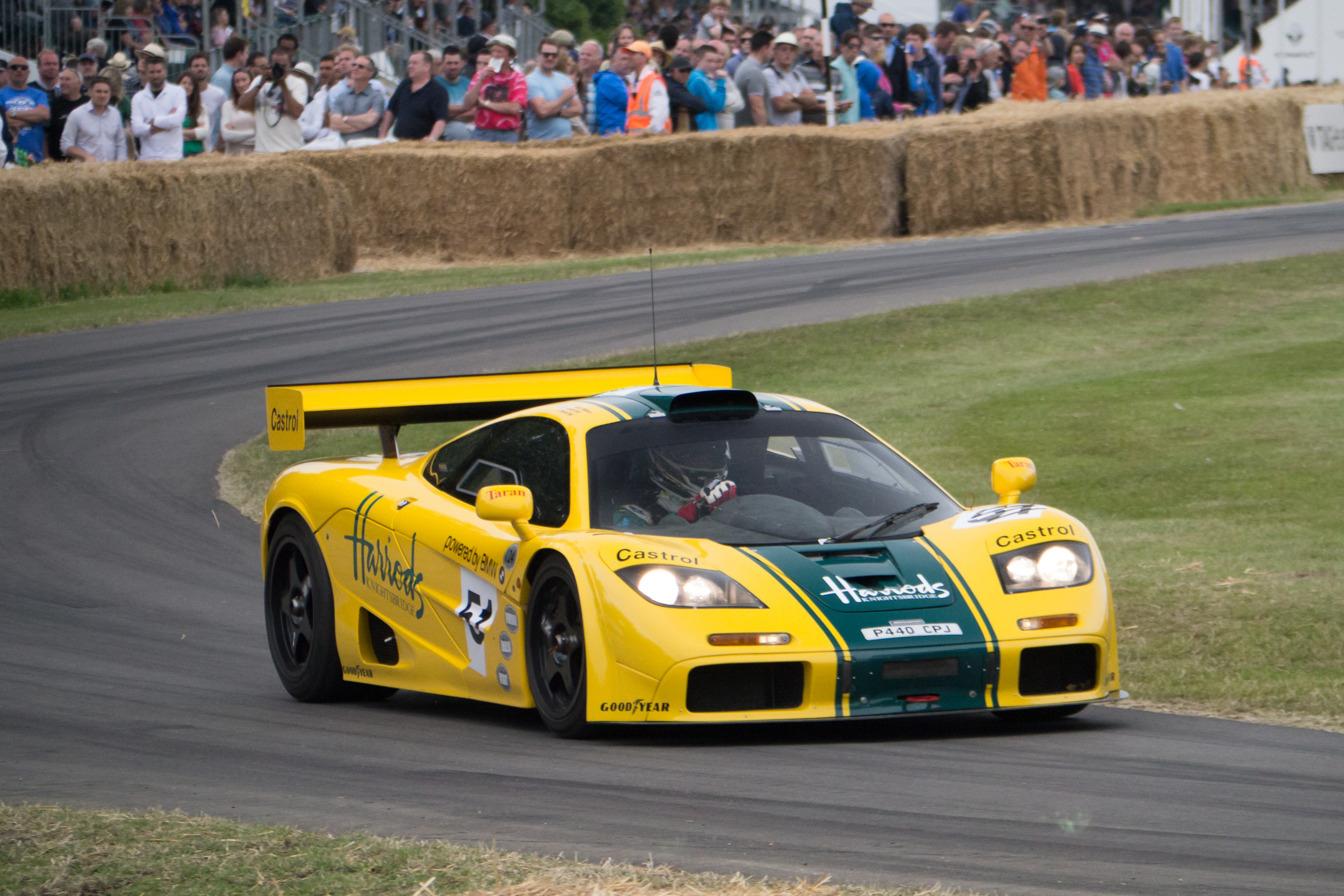
6. **Renault Sport Spider (1995-1999)**The Renault Sport (R.S.) division was sadly killed off by Renault in 2023, but for years it provided a true counterpart to BMW’s M or Merc’s AMG for people with tighter budgets. R.S. gave us some truly memorable cars. Most of them were hot hatches, but in 1995, it showed perhaps its most exotic creation — the Sport Spider, a machine built with one singular purpose: driving enjoyment.
Small. Lightweight. Built for pure driving enjoyment on a twisty road, the RSS had everything — except a roof, meaning owners were always at the mercy of the meteorologist’s predictions. Early versions didn’t even have windscreens, challenging drivers to truly connect with the elements. At least the doors mimicked Lambo’s with their dramatic scissor-like opening action, ensuring a stylish entrance.
Take it on a twisty road when the sun was shining, though, and you got the ride of your life. Made from an aluminum chassis dressed in plastic body panels, the Renault Sport Spider weighed just 2,127 pounds, making it incredibly agile. It was also a mid-engine car, which only added to its handling prowess, delivering a beautifully balanced experience.
Propelling the Sport Spider was a 2.0-liter naturally aspirated four-cylinder, paired with a five-speed manual. It was enough for a 0-62 mph sprint of 6.5 seconds and a top speed of 131 mph. Unfortunately, Renault’s mid-engine effort was a flop; six months after its announcement, Lotus announced the Elise, which was lighter and quicker. Oh, and it had a roof. However, that doesn’t change the fact that the Sport Spider is an excellent driver’s car that truly deserves more attention.
Car Model Information: 2023 Hyundai PALISADE Calligraphy
Name: Renault Sport Spider
Aka: Renault Spider
Manufacturer: Renault Sport
Production: 1996–1999
Assembly: Dieppe,Seine-Maritime
Designer: Patrick Le Quément
Class: Sports car
BodyStyle: Roadster (automobile)
Layout: Rear mid-engine, rear-wheel-drive layout
Doors: Scissor doors
Engine: Renault F7R engine,Multi-valve,Straight-four engine
Transmission: Manual transmission
Wheelbase: 2343 mm
Abbr: on
Length: 3795 mm
Width: 1830 mm
Height: 1250 mm
Weight: convert
Categories: All articles lacking in-text citations, Articles lacking in-text citations from July 2015, Articles with short description, Cars introduced in 1996, Commons category link is on Wikidata
Summary: The Renault Sport Spider is a roadster produced by the French automaker Renault Sport, a subsidiary of Renault, between 1996 and 1999.
Get more information about: Renault Sport Spider
Buying a high-performing used car >>>
Brand: Renault Model: Sport Spider
Price: $32,135 Mileage: 69,109 mi.
.jpg)
7. **Toyota MR2 Spyder (2000-2006)**The Toyota MR2 was once a coveted mid-engine enthusiast sports car. Lightweight and very potent, the MR2 offered buyers with tighter budgets supercar thrills. But of the three generations, the last one — after which the MR2 was discontinued as a model — is not as highly rated, often overlooked in favor of its earlier, more powerful siblings.
The main reason for this relative obscurity is its 1.8-liter 1ZZ-FED engine, which the MR2 borrowed from the Corolla of its era. It made only 138 hp; true, that was underpowered even when the MR2 was new, but the MR2 Spyder also weighed less than the first-gen model, at around 2,200 pounds, helping it punch above its weight class.
Thus, it still reached 60 mph in a decent 6.8 seconds when paired with the five-speed manual transmission. A sequential manual gearbox was also available, but it was generally considered too slow. However, the fact that the MR2 Spyder has a Corolla engine means it’s very reliable. You can easily find cheap parts, too, and repairs are straightforward. Really, there is no other mid-engine sports car as easy to own, offering exotic car dynamics with everyday peace of mind.
And thanks to its configuration, the MR2 Spyder is fantastic to drive in the corners, with MotorTrend calling it ‘an amazingly sophisticated chassis’ in a comparison test with the NB MX-5 Miata at the time. If you ever wanted more performance in your MR2 Spyder, a popular and easy swap is the high-revving 2ZZ-GE engine with VVTL-i. With 180 hp on tap, it transforms the MR2 Spyder into a much more visceral machine. Moreover, because it was used in the Celica GTS, Lotus Elise, and Matrix/Corolla, 2ZZ parts are also readily available, making it a brilliant, overlooked tuning platform.
Car Model Information: 2023 Hyundai PALISADE Calligraphy
Name: Toyota MR2
Caption: Second generation MR2
Manufacturer: Central Motors
Aka: Toyota MR (France and Belgium)
Production: 1984–2007
Assembly: Sagamihara, Kanagawa
Class: Sports car
Layout: Rear mid-engine, rear-wheel-drive layout
ModelYears: 1985–2007
Categories: 1990s cars, 2000s cars, All Wikipedia articles written in American English, All articles containing potentially dated statements, All articles needing additional references
Summary: The Toyota MR2 is a line of two-seater, mid-engined, rear-wheel-drive sports cars, manufactured in Japan and marketed globally by Toyota from 1984 until 2007 over three generations: W10 (1984–1989), W20 (1989–1999) and W30 (1999–2007). It is Japan’s first rear mid-engined production car.
Conceived as a small, economical and sporty car, the MR2 features a straight-four engine, transversely mounted in front of the rear axle, four-wheel disc brakes, and fully independent coilover suspension – MacPherson struts on each wheel.
The name MR2 stands for either “mid-ship run-about 2-seater” or “mid-engine, rear-wheel-drive, 2-seater”. In French-speaking markets, the vehicle was renamed Toyota MR because the abbreviation “MR2” sounds like the profanity “merdeux” when spoken in French.
Get more information about: Toyota MR2
Buying a high-performing used car >>>
Brand: Toyota Model: MR2 Spyder
Price: $32,135 Mileage: 69,109 mi.

8. **Ford EXP Turbo (1984-1988)**AMC wasn’t the sole American manufacturer brave enough to venture into the compact two-seater segment; Ford, with its EXP Turbo in the 1980s, offered a distinct take on the formula. The EXP, also marketed as the Mercury LN7 Sport Coupe, was essentially a small coupe built on the front-wheel-drive Escort economy car. Yet, Ford truly committed to making it look the part of a sporty machine, outfitting it with design cues like a prominent hood bulge, a distinctive short-notch trunk featuring a huge window, and those undeniably sporty, protruding headlights that screamed performance.
Initially, the powertrains were, by modern standards, rather demure. The entry-level 1.6-liter engine mustered a modest 70 hp, while even the High Output version only managed 80 hp. Ford, however, understood the need for more oomph and, in 1984, introduced a turbocharged variant. This boost bumped output to a more respectable 120 hp, placing its performance squarely alongside other affordable two-seaters of the era. This turbocharged zest allowed for a decent 0-60 sprint in approximately 9 seconds, always channeled through a standard five-speed manual transmission.
Crucially, the EXP Turbo truly distinguished itself as a hidden gem thanks to a series of purposeful handling upgrades. Ford equipped this compact sports car with new Koni shocks and stiffer springs, which also lowered its stance by 0.75 inches for an enhanced center of gravity and a more aggressive look. Thicker sway bars and beefier brakes completed the dynamic package, transforming what might have been a straightforward commuter into a genuinely more entertaining and engaging car to drive. These thoughtful enhancements certainly elevated the EXP Turbo beyond its humble origins.
Ultimately, the Ford EXP Turbo serves as a captivating footnote in American automotive history. It’s a testament to a time when automakers weren’t afraid to experiment, proving that even a platform rooted in economy could, with a dash of turbocharging and a sprinkle of performance tuning, yield a spirited little machine. It’s a bold statement that still makes you smile with its unique character, deserving of far more attention than it typically receives.
Car Model Information: 2023 Hyundai PALISADE Calligraphy
Name: Ford EXP
Caption: 1982 Ford EXP
Aka: Mercury LN7,Ford Escort EXP
Manufacturer: Ford Motor Company
Production: 1981–1988
ModelYears: 1982–1988
Class: Compact car
Platform: Ford Escort (North America)
Assembly: Wayne, Michigan,Milpitas, California,St. Thomas, Ontario
Layout: Front-engine, front-wheel-drive layout
BodyStyle: hatchback
Related: Ford Escort (North America),Ford Tempo
Categories: 1980s cars, All articles needing additional references, All articles with unsourced statements, Articles needing additional references from May 2025, Articles with short description
Summary: The Ford EXP (also called Ford Escort EXP) is a sports compact coupe that was manufactured and marketed by Ford Motor Company from 1982 to 1988, across two generations. The first two-seat Ford since the original Ford Thunderbird, the EXP was derived from the American Ford Escort. In contrast to its platform counterpart, the model line was not a “world car”, but developed entirely for North America. For 1982 and 1983, Mercury marketed a badge engineered variant of the EXP was also sold as LN7.
Competing against the similarly configured Honda CR-X, the EXP shared its powertrain and many chassis underpinnings with the Escort. Alongside its front and rear fascia styling, the EXP differed primarily in its roofline, with the rear seat area converted to additional cargo space. The EXP received a minor face lift during model year 1985.
After model year 1988, the EXP was discontinued.
Get more information about: Ford EXP
Buying a high-performing used car >>>
Brand: Ford Model: EXP Turbo
Price: $32,135 Mileage: 69,109 mi.
Read more about: Beyond the Hype: 14 Unsung Automotive Icons That Defy Demolition and Redefine Longevity
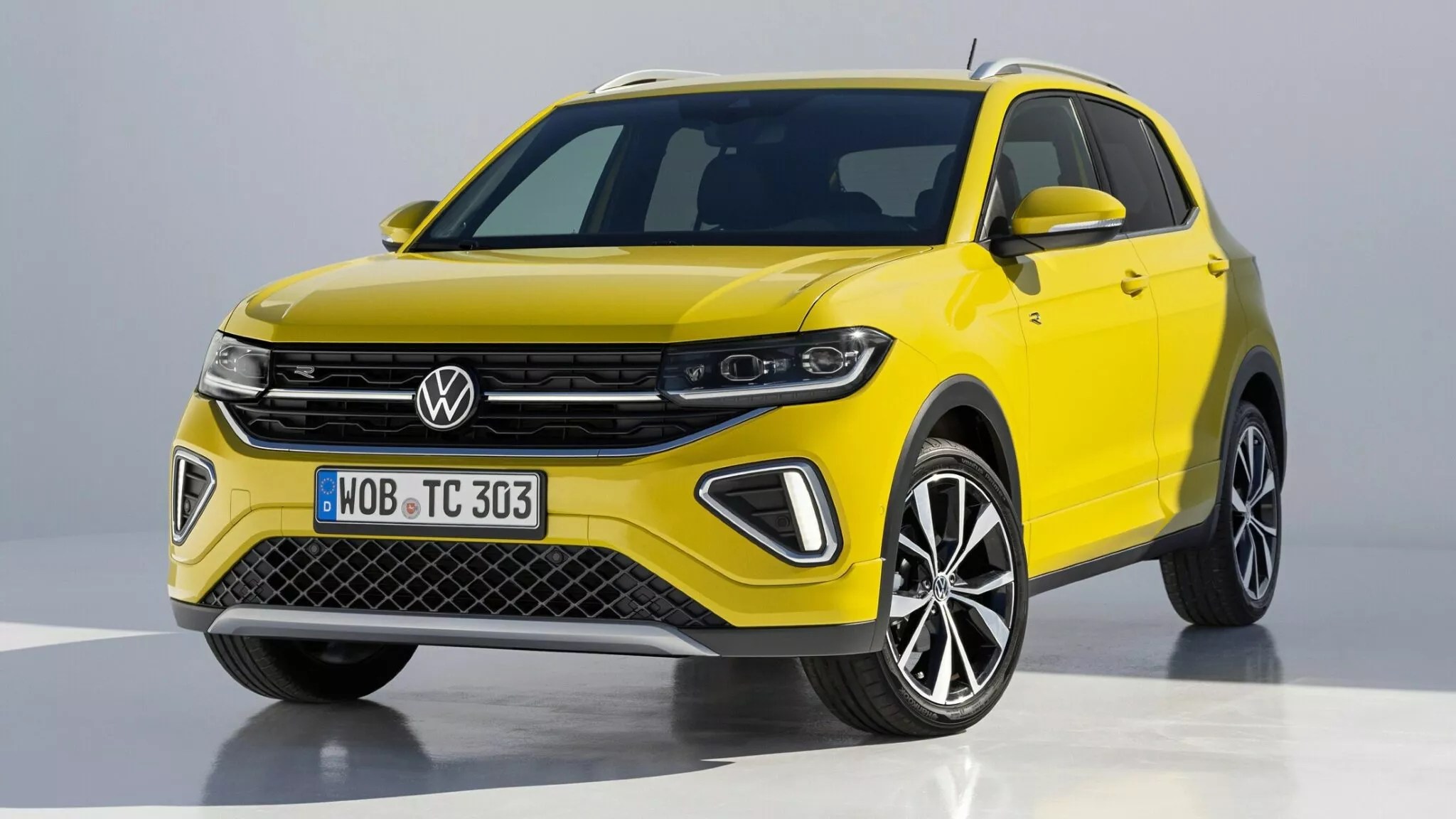
9. **Volkswagen SP2 (1972-1976)**Sometimes, a car simply stops you dead in your tracks with its sheer visual magnificence, and the Volkswagen SP2 is precisely one such machine. While it might not have been a fire-breathing beast in terms of performance, its breathtaking beauty alone secures its coveted place on this list. Created by Volkswagen’s Brazilian subsidiary, the SP2 stands as a strong contender for the best-looking VW ever crafted, easily surpassing the highly revered Karmann Ghia in its aesthetic appeal. With curvaceous, flowing lines that evoke the purest Italian exotics rather than its humble German roots, it’s a stunning piece of automotive sculpture that simply doesn’t get the credit it deserves.
This aesthetic prowess, however, shouldn’t entirely surprise us, as VW of Brazil was also responsible for the equally cool-looking Puma sports car. The SP2 was conceived not as an outright performance monster, but rather as a stylish, accessible sports car for the people, reflecting the economic realities in Brazil during the 1970s. It beautifully married exotic looks with a more modest heart, embracing the Volkswagen ethos of widespread appeal with a hefty dose of flair. This was a car designed primarily to turn heads and provide joy through its stunning form, not necessarily to conquer racetracks.
Underneath that glorious bodywork, the SP2 housed an air-cooled 1.7-liter flat-four engine, mounted at the back, delivering a modest but adequate 75 hp. Yes, much like a Porsche, but without the stratospheric horsepower figures. This engine, paired with a four-speed manual transmission as standard, was actually an upgrade from the similar SP1, which offered a mere 65 hp. While it took a leisurely 16 seconds to reach 62 mph and topped out at 100 mph, its performance was perfectly acceptable for its intended market. The SP2 proved that you didn’t need blistering speed to look incredibly cool, making it a true “Porsche for the poor” in the most complimentary sense of style and aspiration.
This Brazilian gem perfectly encapsulates the idea that charm and aesthetic impact can be just as important as raw power. The SP2 remains a testament to what happens when daring design meets practical engineering, resulting in a car that continues to captivate enthusiasts decades after its limited production run. It’s a vision of beauty that deserves to be celebrated far more widely.
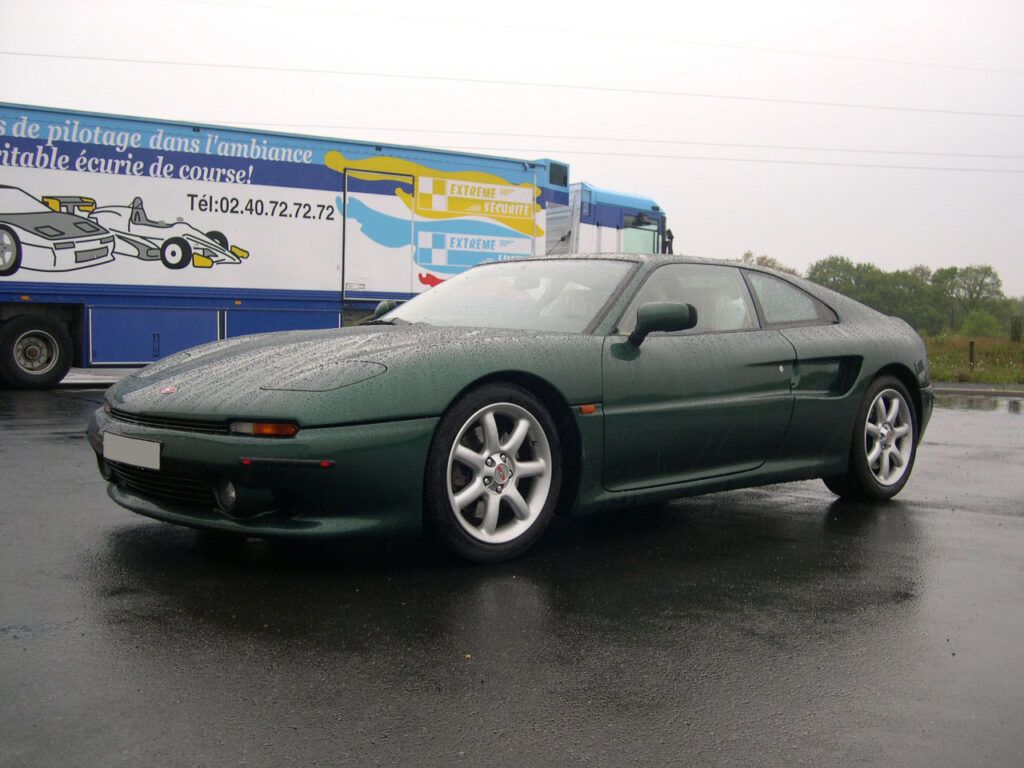
10. **Venturi 400 GT (1987-1999)**For those who crave raw power and uncompromising performance, our next forgotten two-seater is an absolute beast that took the fight directly to the supercar elite. The Venturi 400 GT was France’s audacious attempt to challenge the established titans from Ferrari, Porsche, and Lamborghini, taking the “racecar for the road” concept to its absolute extreme. While it ultimately didn’t seize the supercar crown of the 1990s, this was certainly not due to any lack of inherent merit; quite the opposite, in fact. The 400 GT was a phenomenal machine, ready to battle on both track and street with serious intent.
Born from the crucible of GT racing, the Venturi 400 GT was engineered with an obsessive focus on weight reduction and advanced technology. Its body was meticulously crafted from Kevlar composite, helping it achieve an astonishingly low curb weight of just 2,513 pounds – a figure that remains incredibly impressive even by today’s demanding supercar standards. This French marvel also pioneered several features that would later become staples of high-performance automobiles; it was the first-ever production vehicle to feature carbon ceramic brakes, a technology now common on the fastest Porsches, Lamborghinis, and Ferraris. It even boasted height-adjustable shocks, another cutting-edge novelty for its time, highlighting its innovative spirit.
But the true heart of this supercar was its formidable powertrain: a 3.0-liter V6 twin-turbo aggressor, unleashing a staggering 402 hp and a beefy 384 lb-ft of torque. Power was routed through a precise five-speed manual transmission, offering a pure, unadulterated driving experience that demanded driver engagement. This potent combination allowed the Venturi 400 GT to sprint from 0 to 62 mph in a blistering 4.7 seconds and reach a top speed of 180 mph. These figures were truly outstanding for its era, especially considering the aerodynamic drag introduced by its prominent, race-bred rear wing.
Visually, the 400 GT exuded purposeful aggression from every angle. Its design, while unique, bore a striking, and entirely welcome, resemblance to the legendary Ferrari F40. The car’s distinct wedge shape and squared-off shoulders gave it a purposeful, almost kit car aesthetic, with huge side air openings and semi-opened pop-up headlights adding to its dramatic visual presence. The Venturi 400 GT is a testament to French engineering prowess and a potent reminder that not all automotive legends necessarily wore Italian or German badges; some, like this one, hailed from the unexpected corners of France.
Car Model Information: 2023 Hyundai PALISADE Calligraphy
Name: Venturi 400
Manufacturer: Venturi Automobiles
Production: 1994-1997
Class: Sports car
Assembly: Couëron,Pays de la Loire
BodyStyle: coupe
Layout: Mid-engine design,rear-wheel drive
Engine: Litre,V6 engine,Turbocharger
Transmission: manual transmission
Designer: Claude Poiraud, Gérard Godfroy
Categories: Articles with short description, CS1 French-language sources (fr), Cars introduced in 1994, Rear mid-engine, rear-wheel-drive vehicles, Short description is different from Wikidata
Summary: The Venturi 400 GT is a sports car produced by the French car manufacturer Venturi. The coupe was produced from 1994 to 1997 with less than 100 units. Only about 15 street versions and 73 units for racing were built.
Due to its resemblance to the Ferrari F40, the 400 GT was often referred by automotive enthusiasts as “the French F40”.
Get more information about: Venturi 400
Buying a high-performing used car >>>
Brand: Venturi Model: 400 GT
Price: $32,135 Mileage: 69,109 mi.
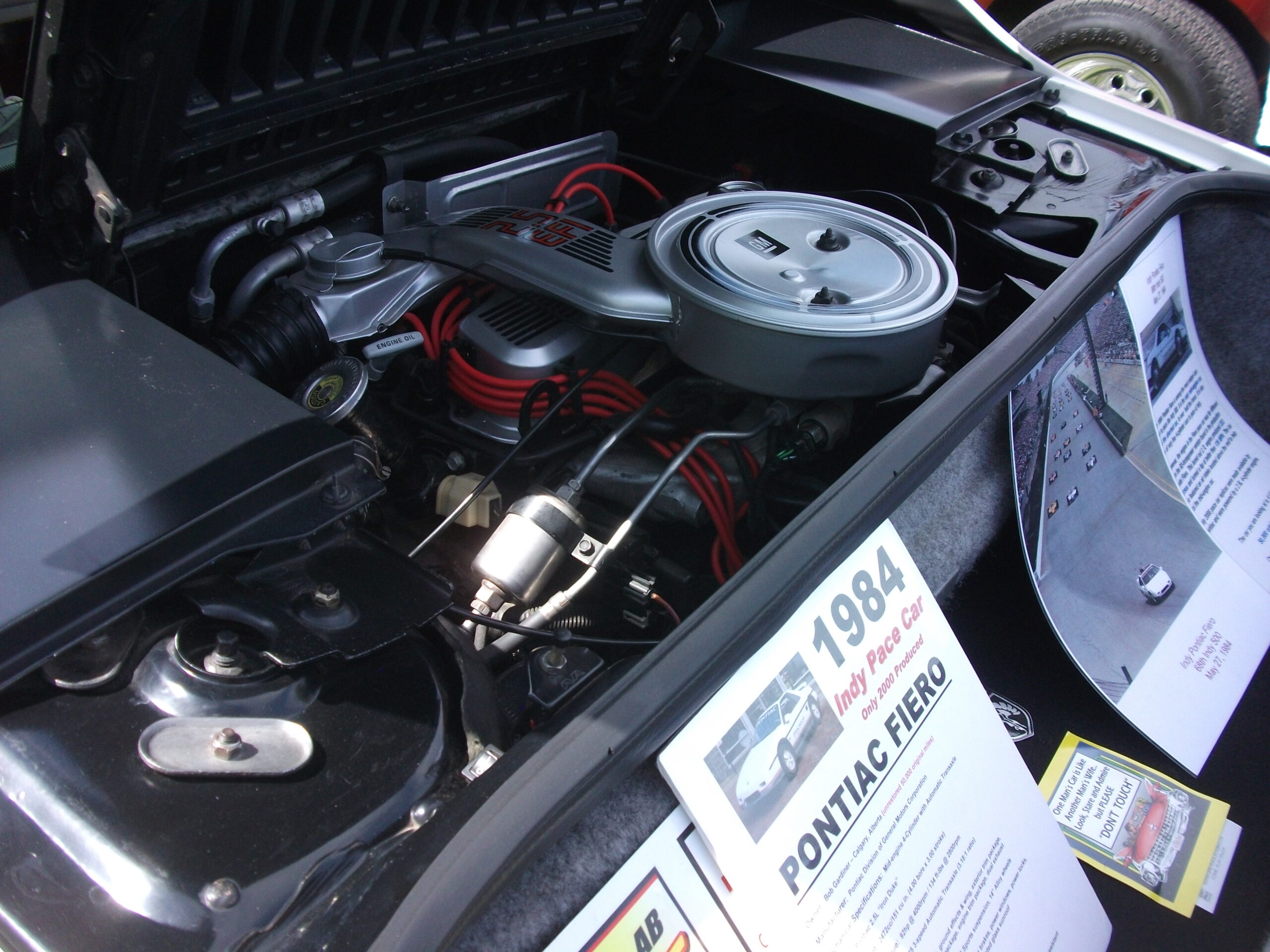
11. **Pontiac Fiero**The Pontiac Fiero – ah, the valiant, if deeply flawed, American mid-engine oddball that stirred more drama than a daytime soap opera, both on and off the road. This car, truly a product of its time, sparked conversations, controversy, and a passionate following. Initially marketed as a fuel-efficient commuter car that just happened to look incredibly sporty – a distinction, it must be said, that was often lost on the general buying public – it rapidly garnered a dedicated cult following thanks to its futuristic, wedge-shaped design and impressively compact dimensions. It was a genuinely bold move from GM, an earnest attempt at something truly different for the American market.
Of course, no discussion of the Fiero is complete without mentioning its early models’ rather unfortunate penchant for engine fires. A minor design flaw, some might euphemistically call it, perhaps akin to a supermodel who occasionally bursts into flames during a photoshoot – dramatic, certainly, but hardly ideal. Yet, to Pontiac’s credit, they continually refined the Fiero, making significant strides, particularly with the 1988 models. These later cars featured an all-new suspension system and the much-desired optional 2.8L V6 engine, finally delivering on some of the car’s latent sporting promise and making it a genuinely impressive driver’s car. Alas, it was too little, too late, and the plug was unceremoniously pulled.
Today, the Fiero is, sadly, mostly remembered for those sensational fiery anecdotes and the myriad of often questionable kit-car modifications that adorned its chassis, transforming it into everything from a Ferrari to a Batmobile. However, beneath the sensationalism and the aftermarket fiberglass, those sharp lines and iconic pop-up headlights truly deserve a lot more love and respectful appreciation. This was GM daring to try something genuinely bold, genuinely different, and that audacious spirit alone earns it a coveted spot on this list. It might have been a valiant swing and a miss in terms of sustained commercial success, but that swing, by golly, had truly great form and undeniable character that still resonates with enthusiasts.
Car Model Information: 1988 Pontiac Fiero GT
Name: Pontiac Fiero
Caption: 1988 Fiero Formula
Manufacturer: Pontiac (automobile)
Production: August 1983 – August 16, 1988,370,168 produced
ModelYears: 1984 – 1988
Successor: Pontiac Solstice
Assembly: Pontiac, Michigan
Designer: Hulki Aldikacti,George Milidrag
Class: Sports car
BodyStyle: fastback,notchback
Platform: GM P platform
Layout: Rear mid-engine, rear-wheel-drive layout
Engine: {{cvt,151,CID,L,1,disp=flip,Iron Duke engine#LR8,Inline-four engine
Transmission: Turbo-Hydramatic 125,Manual transmission,Getrag 282 transmission,Isuzu
Wheelbase: 2373 mm
Abbr: on
Length: 4072 mm
Width: 1750 mm
Height: 1191 mm
Weight: 1116 to
Categories: All articles with unsourced statements, Articles with short description, Articles with unsourced statements from February 2012, Articles with unsourced statements from July 2024, Articles with unsourced statements from September 2011
Summary: The Pontiac Fiero is a rear mid-engine, light sports car manufactured and marketed by Pontiac for model years 1984 – 1988. Intended as an economical commuter car with modest performance aspirations, it was Pontiac’s first two-seater since their 1926 to 1938 coupes, and the first mass-produced, rear mid-engine car by any American manufacturer.
In addition to using 4- and 6-cylinder engines to help Pontiac meet America’s ‘CAFE’ average fuel economy requirements, the Fiero’s chassis and structure technology used non-load-bearing, composite body-panels, contributing to the car’s light-weight and its unique selling proposition. Pontiac engineers modified the design over its life to enhance its performance and reposition the two-seater closer to the implications of its sporty configuration.
The Fiero 2M4 (two-seat, mid-engine, four-cylinder) placed on Car and Driver magazine’s Ten Best list for 1984, and was the Official Pace Car of the Indianapolis 500 for 1984.
A total of 370,168 Fieros were manufactured over five years’ production, its mild performance, reliability and safety issues becoming points of criticism. The Fiero was discontinued after annual sales fell steadily.
Get more information about: Pontiac Fiero
Buying a high-performing used car >>>
Brand: Pontiac Model: Fiero
Price: $15,500 Mileage: 94,124 mi.
Read more about: America’s Automotive Hall of Shame: Unforgettable Engineering Blunders and the Cars We Love to Lament

12. **Honda CR-X Del Sol**Ah, the Honda CR-X Del Sol – a car that perfectly embodied the spirit of sunny days and carefree drives, a delightful burst of optimism on wheels. This was Honda’s wonderfully funky, sun-loving follow-up to the legendary CR-X, and it arrived packing a feature that felt like a technological miracle for the early ‘90s: a manually removable targa roof panel. Imagine the sheer joy of easily stowing away the roof, letting the sun soak in and the wind whip through your hair. It was light, delightfully playful, and exuded that unmistakable Japanese charm – quirky without ever veering into outright silliness. Think of it less as mere transport and more as a rolling picnic basket for two, purpose-built for cruising with the top off.
While it certainly weighed a bit more than its featherweight predecessor, the Del Sol remained incredibly agile and engaging to drive, proving that balance and chassis dynamics matter more than outright power. It was never designed to be a speed demon, nor did it ever need to be. Boasting a peppy 1.6L DOHC VTEC engine in the Si and VTEC models, it delivered enough spirited performance to make every journey an event. But its true magic lay in reminding you that driving could simply be… fun. Pure, unadulterated, wind-in-your-hair fun, a genuine antidote to mundane commutes. Seriously, did we mention that glorious removable roof panel? It was a true game-changer for accessible open-top motoring.
Even today, spotting a CR-X Del Sol on the roads is a rare and thoroughly delightful treat, a true automotive unicorn. When one does pass by, it’s genuinely hard not to crack a smile and instantly be transported back to simpler times, when automotive innovation wasn’t always about horsepower figures or colossal size, but about creating unique, joyful experiences. The Del Sol stands as a bright, effervescent symbol of Honda’s playful side, a car that truly deserves renewed appreciation for its unwavering ability to deliver smiles by the mile.
Car Model Information: 2023 Hyundai PALISADE Calligraphy
Name: Honda CR-X del Sol
Caption: 1994 Honda Civic del Sol Si
Manufacturer: Honda
Aka: Honda Civic del Sol,Honda del Sol,Honda CRX
Production: 1992–1998
ModelYears: 1993–1998
Assembly: Suzuka, Mie
Class: Sport compact
BodyStyle: Roadster (automobile)
Layout: Front-engine, front-wheel-drive layout
Chassis: EG1, EG2, EH6
Related: Honda Civic (fifth generation),Honda Integra#3
Engine: Honda D engine#D15B7,Honda D engine#D15B VTEC,Honda D engine#D16Z6,Honda B engine#B16A3
Transmission: Automatic transmission
Wheelbase: cvt
Length: cvt
Width: cvt
Height: cvt
Weight: cvt
Predecessor: Honda CR-X
Designer: Yoshikazu Kigoshi (1989)
Categories: All articles needing additional references, Articles needing additional references from September 2014, Articles with short description, Cars discontinued in 1998, Cars introduced in 1992
Summary: The Honda CR-X del Sol (marketed in other markets as the Honda Civic del Sol, Honda del Sol and the Honda CRX) is a two-seater targa-top car manufactured by Honda from 1992 until 1998. Despite the body resemblance to a mid-engine car design, the del Sol uses a front-engine layout based on the fifth-generation Civic and was the successor to the Honda CR-X.
The Spanish name del Sol translates to of the sun, and refers to the car’s opening roof. The del Sol featured a removable aluminum hardtop that stowed onto a hinged frame in the trunk and a motorized drop-down rear window. Manual and automatic “TransTop” roofs were available in select markets. It is the first open-air Honda sold in the United States.
Production and sales ended with the 1997 model in North America and 1998 elsewhere.
Get more information about: Honda CR-X del Sol
Buying a high-performing used car >>>
Brand: Honda Model: CR-X Del Sol
Price: $32,135 Mileage: 69,109 mi.
Read more about: 9 Compact Cars Making a Big Splash in 2025: Expert Picks and Detailed Analysis
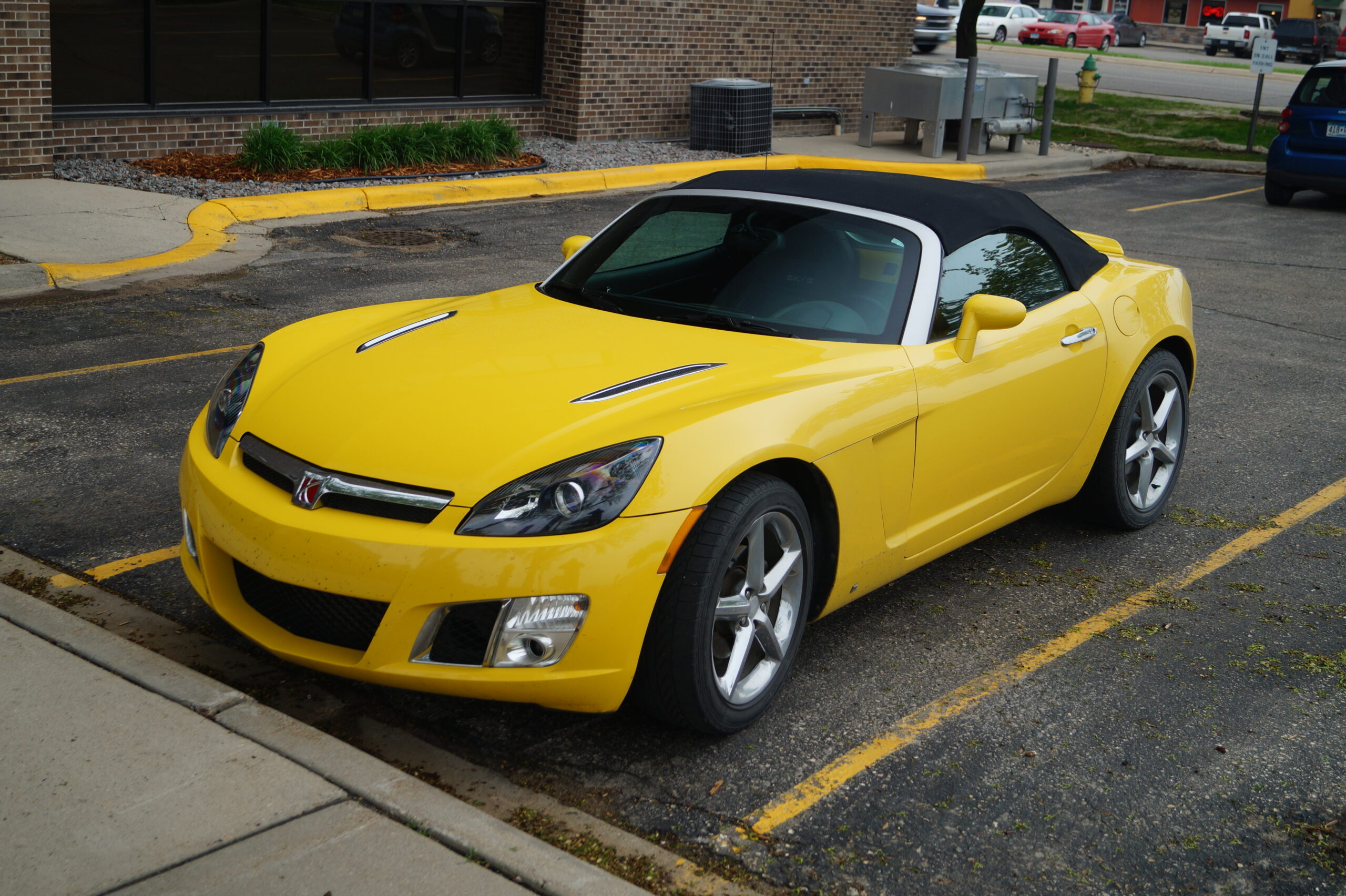
13. **Saturn Sky**Before General Motors ultimately drew the curtains on its experimental, “no-haggle,” plastic-paneled Saturn brand, they unleashed a truly gorgeous swansong: the sleek little roadster known as the Saturn Sky. This car, visually speaking, looked like a Corvette’s younger, sharper, and decidedly more rebellious cousin. Especially striking in a vibrant red or gleaming silver, it made a serious visual statement, instantly capturing attention and proving that Saturn could, in fact, produce something truly desirable and emotionally resonant. It was a stylish, compact sports car that defied the brand’s often-staid reputation.
Sharing its adaptable Kappa platform with its siblings, the Pontiac Solstice and the Opel GT, the Sky truly came into its own with the optional 2.0L turbocharged Ecotec engine. In its potent Redline trim, this engine churned out a very respectable 260 horsepower, transforming the Sky from merely a pretty face into a genuinely capable and exhilarating sports car. It offered brisk acceleration and nimble handling, all wrapped up in a package that felt far more premium and engaging than its badge might typically suggest. It was, without a doubt, a proper driver’s car, ready to tackle a twisty road with enthusiasm.
Despite its striking looks and impressive performance, the Saturn Sky never quite received the widespread fame or recognition it truly deserved. This was likely due to the unfortunate timing of its release, as the Saturn brand itself was fading faster than a bad tattoo in the unforgiving automotive landscape. However, anyone fortunate enough to have driven a Sky Redline will enthusiastically tell you that it possessed the captivating looks, the agile moves, and more than enough turbocharged attitude to make you completely forget the badge on the front. Honestly, if a car could embody a spirit, the Sky is something worthy of getting tattooed – though perhaps a small one on your ankle would be more suitable than a full back piece, just for practicality’s sake, of course.
Car Model Information: 2007 Saturn Sky Base
Name: Saturn Sky
Caption: 2007 Saturn Sky
Manufacturer: General Motors
Aka: Opel GT#GT (roadster) (2007–2010),Daewoo G2X
Production: 2006–2009
ModelYears: 2007–2010
Assembly: Wilmington, Delaware
Designer: Franz von Holzhausen
Class: Sports car
BodyStyle: Roadster (automobile)
Platform: GM Kappa platform
Related: Pontiac Solstice
Layout: Front-engine, rear-wheel-drive layout#Front mid-engine, rear-wheel-drive layout
Engine: ubl
Transmission: Aisin Seiki,GM 5L40 transmission
Wheelbase: 95.1 in
Abbr: on (Red Line)
Length: 161.1 in
Width: 71.4 in
Height: 50.2 in
Weight: 2940 lb
Categories: All articles with specifically marked weasel-worded phrases, Articles with short description, Articles with specifically marked weasel-worded phrases from September 2025, Cars discontinued in 2009, Cars introduced in 2006
Summary: The Saturn Sky is a convertible sports car that was produced by Saturn, and was initially released in the first quarter of 2006 as a 2007 model. It uses the Kappa automobile platform shared with the Pontiac Solstice. The Sky concept was shown at the 2005 North American International Auto Show, with the production version following at the 2006 show. It was built at GM’s Wilmington Assembly plant in Wilmington, Delaware, alongside the Solstice. The Sky featured 18-inch wheels and a 2.4 L (146 cu in) Ecotec LE5 inline-four engine with direct injection and variable valve timing that produced 177 hp (132 kW), a new 2.0-litre turbocharged direct injected inline-four engine also featuring VVT that made 260 hp (194 kW) and 260 lb⋅ft (353 N⋅m). An optional dealer-installed MAP sensor and ECM flash upgrade kit was also available for the Red Line model from 2008 onwards. Both five-speed manual and automatic transmissions were available.
The styling for the Sky, penned by Franz von Holzhausen, was based on the Opel Speedster’s design. It was available in some European markets as the Opel GT. A rebadged version named the Daewoo G2X was unveiled as a concept vehicle for the South Korean market in 2006, then released for sale in September 2007. The price of the G2X was nearly double the price of the Sky and Solstice as sold in the United States, likely due to tariffs and cost of shipping from the Wilmington plant.
The Wilmington Assembly plant closed in July 2009, ending production as both the Pontiac and Saturn nameplates were retired.
Get more information about: Saturn Sky
Buying a high-performing used car >>>
Brand: Saturn Model: Sky
Price: $12,900 Mileage: 22,815 mi.
Read more about: Buyer Beware: 12 Cars That Will Cost You a Fortune Before You Hit 50,000 Miles
14. **Fiat X1/9**Imagine, if you will, a world where a go-kart and a Lamborghini Countach somehow managed to have a love child during the wildly hedonistic 1970s. The glorious result, my friends, would undoubtedly be the Fiat X1/9. This impossibly low, wedge-shaped little stinger was penned by the legendary Marcello Gandini at Bertone, and from every angle, it had undeniable Italian styling etched across its glorious profile. Boasting a genuine mid-engine layout, a clever removable targa top, and an attitude to spare, it was a miniature supercar in spirit, if not in raw power, delivering exotic looks on a far more accessible budget.
Like many things of Italian origin, the X1/9 possessed its own unique set of quirks and charms. Yes, it was perhaps a little fragile, occasionally temperamental, and, in true old-Fiat fashion, notoriously prone to rust. Think of it as charmingly eccentric, much like that colorful uncle you find endlessly entertaining and charismatic, but who isn’t always the most dependable when it comes to keeping his old car in one piece. Despite these endearing foibles, its audacious styling meant it looked like it belonged on a bedroom poster right alongside a Ferrari or a Countach, an accessible dream for many aspiring enthusiasts.
Today, these automotive gems are, sadly, increasingly rare sightings, making them even more special when you do encounter one in the wild. However, the Fiat X1/9 is absolutely worth tracking down, not just for its unique, low-slung driving dynamics, but simply to turn heads and spark enthusiastic conversations at any Cars and Coffee event you might attend. It’s a testament to audacious design and clever packaging, proving that you don’t need a massive engine or an astronomical price tag to achieve genuine automotive artistry on a budget. The X1/9 remains a vibrant, low-slung symbol of pure driving passion that refuses to be truly forgotten.
Car Model Information: 1980 FIAT X1/9
Name: Fiat X1/9
Manufacturer: Fiat
Aka: Bertone X1/9
Production: [object Object]
Assembly: Fiat,Gruppo Bertone
Designer: Marcello Gandini
Class: Sports car
BodyStyle: Targa top
Layout: Rear mid-engine, rear-wheel-drive layout
Related: Fiat 128,Fiat Ritmo
Engine: Fiat 128 SOHC engine,Fiat 128 SOHC engine
Transmission: Manual transmission
Wheelbase: cvt
Length: cvt
Width: cvt
Height: cvt
Weight: cvt
Predecessor: Fiat 850,Vignale Gamine
Successor: Fiat Barchetta
Sp: uk
Categories: 1980s cars, Articles with short description, Bertone vehicles, CS1 Italian-language sources (it), Cars introduced in 1972
Summary: The Fiat X1/9 is an Italian two-seater mid-engined sports car designed by Bertone and manufactured by Fiat from 1972–1982 and subsequently by Gruppo Bertone from 1982–1989.
With a transverse engine and gearbox in a mid-mounted, rear-wheel drive configuration, the X1/9 was noted for its balanced handling, retractable headlights, lightweight removable hardtop which could be stowed under the bonnet, front and rear storage compartments — and for being the first Fiat to have been designed from its conception to meet US safety regulations.
Get more information about: Fiat X1/9
Buying a high-performing used car >>>
Brand: Fiat Model: X1/9
Price: $29,900 Mileage: 1 mi.
Read more about: From Garage Glory to Budget Buys: Iconic Cars That Lost Their Collectible Shine and Are Now Practically Worthless
And so, our journey through the annals of automotive history concludes, but the spirit of these overlooked two-seater sports cars lives on, vibrant and undimmed. They are more than just metal and rubber; they are declarations of joy, daring experiments in design, and defiant symbols of a time when driving was an intimate, unfiltered experience. They remind us that sometimes, the greatest treasures are found not in the obvious, but in the forgotten corners of innovation, just waiting for passionate eyes to rediscover their unique brilliance. So, next time you dream of an ultimate driving machine, spare a thought for these unsung heroes – they truly deserve a place in every enthusiast’s heart, proving that two seats and a whole lot of character will always be the perfect recipe for automotive bliss.

